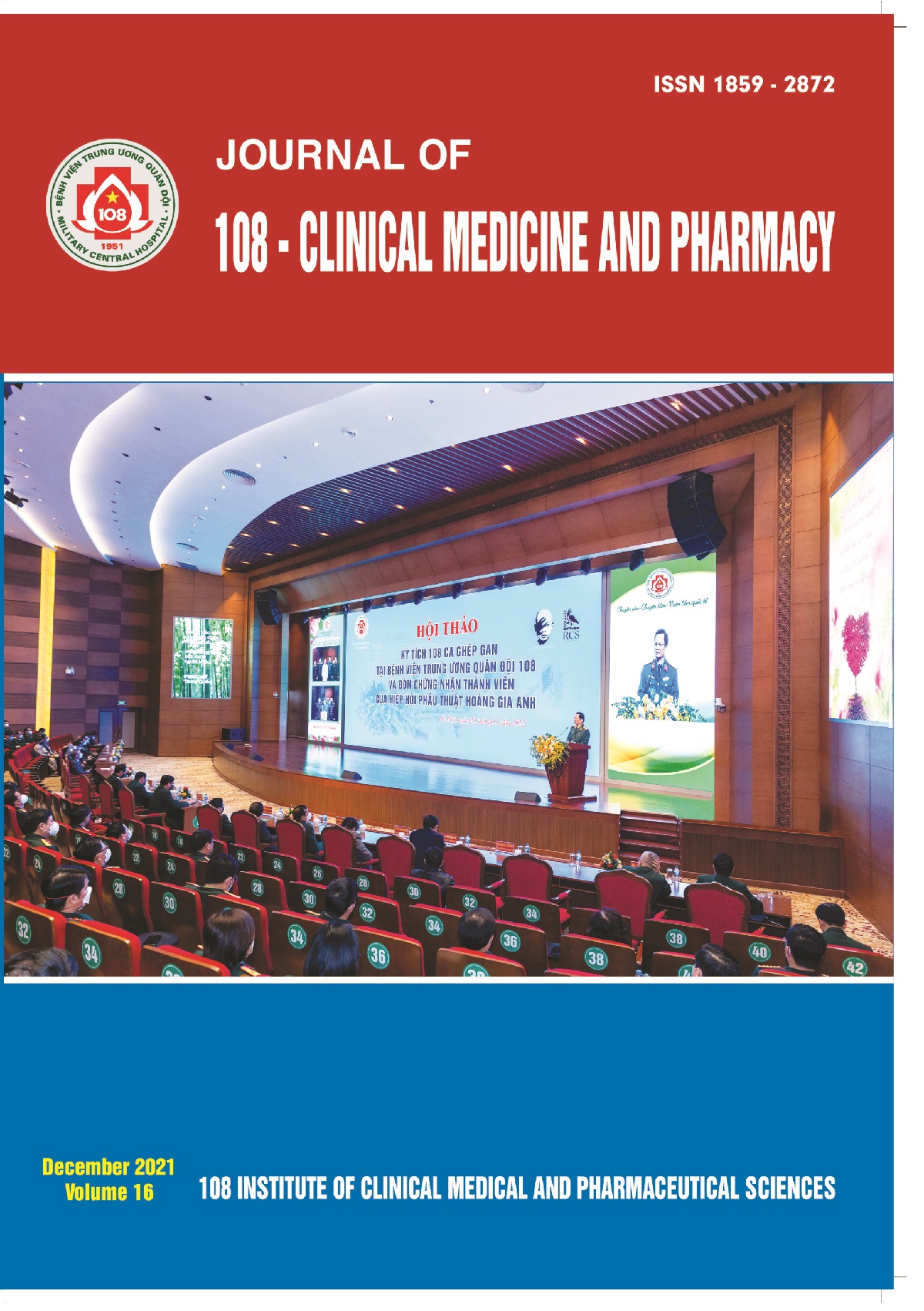The dual toning technique of 1064nm Nd:YAG picosecond and quasi-long pulsed laser combined with D-pigment cream in treatment of melasma
Main Article Content
Keywords
Abstract
Objective: To evaluate the efficacy and safety of the dual toning laser of Nd:YAG 1064nm picosecond and quasi-long pulsed laser combined with D-pigment night cream in treatment of severe melasma. Subject and method: Twenty four Vietnamese females, mean age of 44.46 ± 8.04 years, Fitzpatrick skin type IV with the clinical diagnosis of dermal and mixed-type melasma were treated with 5 combination sessions of picosecond laser Nd:YAG 1064nm (Picoplus) with a spot size of 8mm, the energy of 0.65 - 0.8J/cm2 and quasi-long pulsed mode laser (Clarity) with the duration of 0.35ms, the spot size of 15mm, the energy of 2.6J/cm2, ICD (Intelligent Cool Device) off. Mild and transient erythema was the endpoint. Laser treatments were given every 4 weeks. All patients were applied with UVA/B sunscreen, SPF of at least 30 in daytime and D-pigment cream at night. Improvement was rated by mMASI at the baseline (first -T1) and after 5 sessions (sixth -T6). Result: The mean mMASI score of 24 patients at T1 was 11.10 ± 3.59 (min 6.0; max 22.4); after one month of 5th session, the mean mMASI score at T6 was reduced to 5.43 ± 2.18 (min 1.8 - max 11.0) (mMASI score reduced by a mean of 5.68 ± 2.36), achieving 51.06 ± 13.17% reduction. There were no unexpected side effects in any patients. Conclusion: Dual toning technique using 1064nm Nd:YAG picosecond and quasi-long pulsed laser combined with D-pigment cream at night was safe, effective and well-tolerated in treatment of patients with melasma. Further larger studies should be carried out with control to confirm the advantage of the method.
Article Details
References
2. Goldberg D, Metzler C (1999) Skin resurfacing utilizing a low-fluence Nd:YAG laser. J Cutan Laser Ther 1(1): 23-27.
3. Kim JE, Chang SE, Yeo UC et al (2013) Histopathological study of the treatment of melasma lesions using a low-fluence Q-switched 1064-nm neodymium:yttrium-aluminium-garnet laser. Clin Exp Dermatol 38(2): 167-171.
4. Mun JY, Jeong SY, Kim JH et al (2011) A low fluence Q-switched Nd:YAG laser modifies the 3D structure of melanocyte and ultrastructure of melanosome by subcellular-selective photothermolysis. J Electron Microsc (Tokyo) 60(1): 11-18.
5. Park YW, Yeo UC (2015) Mottled hypopigmentation from laser toning in the treatment of melasma: A catastrophic or manageable complication?. Med Lasers 4: 45-50.
6. Choi CP, Yim SM, Seo SH et al (2015) Retrospective analysis of melasma treatment using a dual mode of low-fluence Q-switched and long-pulse Nd:YAG laser vs. low-fluence Q-switched Nd:YAG laser monotherapy. Journal of Cosmetic and Laser Therapy 17(1): 2-8.
7. Choi YJ, Nam JH (2017) Efficacy and safety of a novel picosecond laser using combination of 1 064 and 595nm on patients with melasma: A prospective, randomized, multicenter, split-face, 2% hydroquinone cream-controlled clinical trial. Lasers Surg Med 49(10): 899-907.
8. Wang YJ, Lin ET, Chen YT et al (2020) Prospective randomized controlled trial comparing treatment efficacy and tolerance of picosecond alexandrite laser with a diffractive lens array and triple combination cream in female asian patients with melasma. J Eur Acad Dermatol Venereol 34(3): 624-632.
9. Chalermchai T, Rummaneethorn P (2018) Effects of a fractional picosecond 1,064 nm laser for the treatment of dermal and mixed type melasma. J Cosmet Laser Ther 20(3): 134-139.
10. Kang Hy, Kim Jh, Goo Bc (2011) The dual toning technique for melasma treatment with the 1064 nm Nd: YAG laser: A preliminary study. Laser therapy 20(3): 189-194.
11. Choi JE, Lee DW, Seo SH et al (2018) Low-fluence Q-switched nd:YAG laser for the treatment of melasma in Asian patients. J Cosmet Dermatol 17(1053-1058).
12. Gokalp H, Akkaya AD, Oram Y (2016) Long-term results in low-fluence 1064-nm Q-Switched Nd:YAG laser for melasma: Is it effective? J Cosmet Dermatol 15(4): 420-426.
13. Dayan SH, Vartanian AJ, Menaker G et al (2003) Nonablative laser resurfacing using the long-pulse (1064-nm) Nd:YAG laser. Arch Facial Plast Surg 5(4): 310-315.
 ISSN: 1859 - 2872
ISSN: 1859 - 2872
